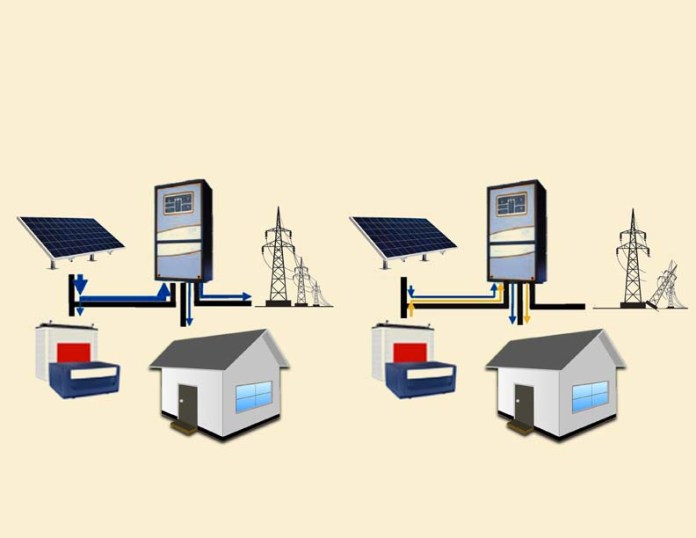
Islanding is an electrical system phenomenon in which distributed generators, say Diesel Generators (DGs), continue to power a site or location in the absence of external grid power or grid outage situations.
To understand this, let’s start with a basic grid-connected system. We have electrical power lines coming from the grid, the many devices & systems at the site using the incoming power (collectively termed as load) and an auxiliary power source(s) at the location (like the generally seen diesel generators). These local sources of power come under ‘distributed generators’, which are present for on-site backup power in case of blackouts, grid outages & any other transmission or reception issue with grid lines. They can also be used in ramping the input power up in cases of increased load or grid power insufficient to satisfy the said load. So, whenever there is a grid issue and input power shuts off, the DGs turn ON and ensure that the circuit is complete & producing enough power to meet the site load. This is what islanding means, the continued functioning by creating a ‘micro-grid’ type scenario wherein on-site power generated satisfies on-site load.
At first glance, this condition seems a favourable one with respect to energy self-sufficiency. But when we look from the side of grid stability & reliability, islanding, if not detected at site & corrective measures are taken, can result in a whole range of electrical issues. If DGs continue to run when the grid power is restored, there will be an imbalance between load & generation. Along with this, issues resulting in abnormal frequencies and voltage levels can potentially threaten grid power stability. Hence, from a regulatory standpoint, it is advised that any islanding be detected and DGs immediately disconnect the circuit which is called ‘anti-islanding’.
Although anti-islanding is a valid grid-side argument, there is much anticipation if the Indian grid is prepared to accommodate the forecasted boom in distributed energy systems. Energy security & self-sufficiency, even at a local level, has gained much traction, especially with our traditional grid infrastructure stagnating. It is argued that in a nation like ours, with our inadequacies in meeting peak loads & frequent grid outages (especially in the summertime when grid stability & reliability are seriously tested), anti-islanding policy needs a rethink. There is also increasing voice put behind ‘intentional islanding’, especially in the rapidly rising renewable space.
This increasing role of renewables is evident in the many green projects undertaken to create hybrid power systems, even some of them replacing DGs with solar PV, wind and such. Though this serves good for the consumer load, this poses an interesting challenge in making our grid functioning robust enough to accommodate these changes. One major issue is that of the intermittent & unreliable generation from renewables. Solar PV only works when daytime irradiance is good and wind turbines rely on shifty wind patterns whereas DGs are fueled by diesel and can give a stable power supply. So, reliable estimation of renewable power (to ensure grid stability) & storage solutions (to meet load requirement) are needed to effectively transition into intentional islanding.

Vijay Bhaskar
The author is a Senior Associate, Analytics, Amplus Solar.














